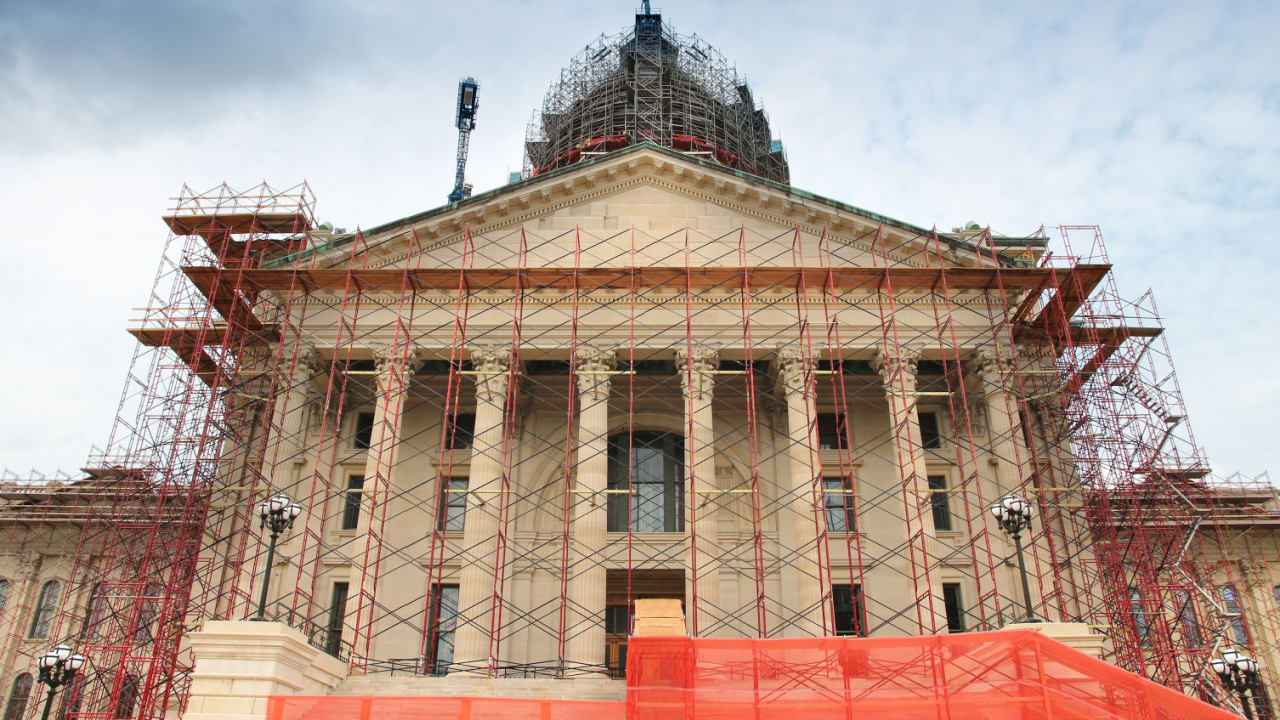
Competing Infrastructure Plans Depend on Crisis Legislating
As both chambers of the legislative branch line up behind their respective infrastructure proposals, one noticeable omission is how to pay for these prospective bills. As if passing a large spending bill through either chamber with no clear funding source wasn’t difficult enough, the COVID-19 pandemic has exploited an already desperate situation, as it has with almost every aspect of American life.
With user-generated revenue streams taking historic losses, in addition to state and municipal budgets facing unprecedented demands, Congress has decided, at least for now, to rely on a combination of deficit spending and bonding—seeing no silver bullet to address the issue.
Election-year politics will only further entrench partisan posturing in the fight over COVID-19 legislative battles, which have now embroiled infrastructure, and will increase the likelihood that Congress will resort to funding programs at current levels.
Why Infrastructure?
The one item of consensus is that an infrastructure investment is needed—and has been for some time. The American Society of Civil Engineers gives the existing United States infrastructure a D+ grade, which is the same mark it received in 2013, while also noting the need to spend $4.5 trillion by 2025 in order to improve the state of the country’s roads, bridges, dams, airports, schools, etc.
Any infrastructure effort, if done correctly, will be a job creator as any investment of this magnitude has the potential to jump-start and sustain an ailing U.S. economy.
The construction industry would welcome a significant investment in infrastructure, as it could be a key crutch to sustaining steady economic activity and accelerating recovery efforts after the immediate effects of the coronavirus pandemic have passed. An increase in construction demand generated by a significant infrastructure investment would have exponential job creation effects in the construction industry, which shed nearly one million jobs in April, before adding back more than 460,000 in May.
Trade associations, such as Associated Builders and Contractors, have highlighted the capacity for lasting impact on the economy and the resultant, critical jobs Americans need that could be created by an infrastructure investment. In fact, for every $1 billion in extra overall construction spending, an average of at least 6,300 construction jobs are generated.
It is also clear that future generations will reap the rewards of strategic construction infrastructure investments in schools, water treatment plants and energy production—works that have been found to improve quality of life, the environment and opportunity for all Americans.
Every dollar invested in infrastructure creates $3.70 in economic growth over 20 years, according to Business Roundtable, an association comprised of CEOs from leading companies with the goal of promoting a leading economy.
Whether responding to the importance of job creation amid the COVID-19 health and economic crisis or the grim state of infrastructure disrepair, there is a proverbial shot clock on passing legislation. The authorization of the 2015 FAST Act is set to expire on Sept. 30, and while there is consensus building among the chambers of Congress, the executive branch, as well as in state and local governments for action on infrastructure, stakeholders don’t see eye-to-eye on what an infrastructure investment will look like.
Competing Priorities
The Senate’s pragmatic plan is structured around two bills that would reauthorize and improve upon the 2015 FAST Act’s surface transportation provisions and include an additional investment in America’s water infrastructure. Each bill was drafted in a bipartisan fashion; both having already received a unanimous vote to advance out of the Environment and Public Works Committee, full Senate consideration is in a holding pattern due to understandably losing floor time to both the pandemic response and policing reform.
Meanwhile, the House Democrats’ plan, which reserved the weighty title of H.R. 2, the Moving America Forward Act, is a sweeping $1.5 trillion proposal that passed the House with a modicum of Republican support. While the Democrats’ initial plan sought (per the Senate) to reauthorize and add to the transportation sections, Republicans did not support the additions made by Democrats, to include “green new deal” language, as well as several other ABC-opposed labor provisions.
Complicating matters further, the Trump Administration’s looming release of a Department of Transportation-led infrastructure proposal could bring both sides to a negotiating phase. Alternatively, and more likely, the prospects of this distinctly different third plan will need to be considered alongside the competing congressional priorities.
U.S. Department of Treasury Secretary Steven Mnuchin, who is often deputized as the Administration’s top congressional negotiator, has indicated that an infrastructure package is unlikely to be incorporated into the next COVID-19 relief bill. But, a focus on permitting, streamlining and cutting regulations will certainly be included in any package endorsed by the Administration.
Through the legislative battles to come, ABC will continue to advocate for the path forward on infrastructure to be rooted in fair and open competition and equal opportunity for all Americans to rebuild their communities.
What’s To Come?
Amid dueling crises that are poised to last, Congress has much to consider, and the expiration of surface transportation authorization on Sept. 30 does not ensure action. In fact, an even more momentous date of Nov. 3—the 2020 election—looms large over impending legislative battles as control of both chambers of Congress and the White House are very much in play.
The positives of addressing America’s infrastructure deficit clearly outweigh the negatives, but it is not a forgone conclusion that Congress will be able to pass a measure that will secure the necessary 60 votes in the Senate, appease the Democrat-controlled House and be signed by the President. Regardless of the result, a large infrastructure investment will most certainly become a political issue in a 2020 election that will be held amid an ailing U.S. economy and plunging job market.
Vance works for Associated Builders and Contractors’ Government Affairs division. Prior to joining ABC, Vance worked in the polling industry. He is a graduate of the University of Arizona and resides in Washington, D.C.
Related stories








